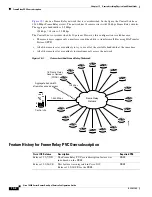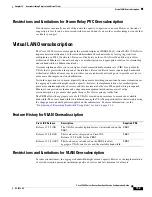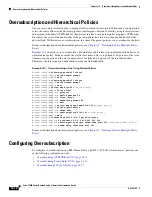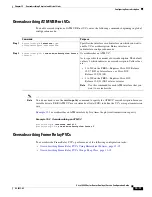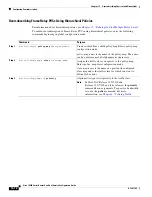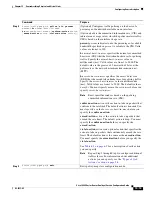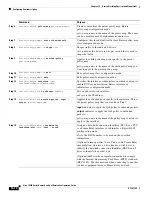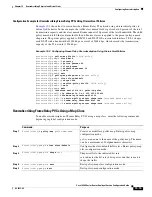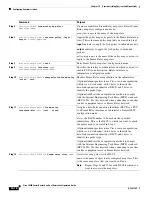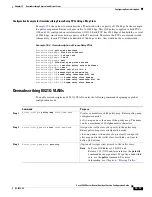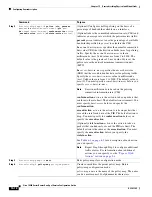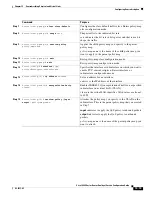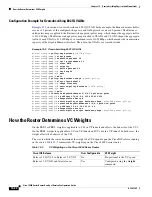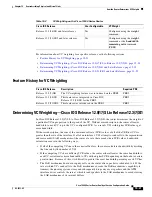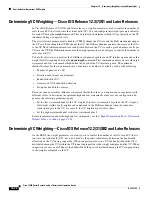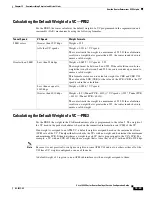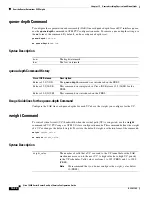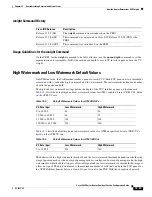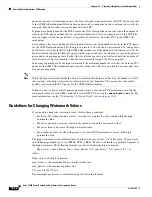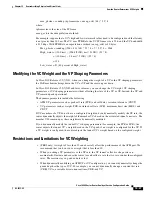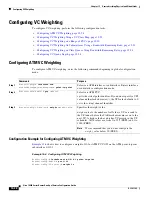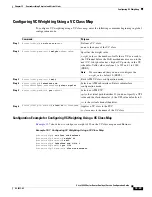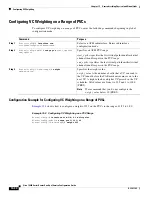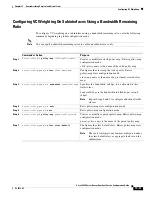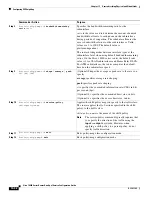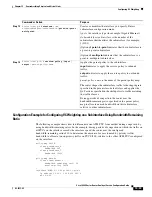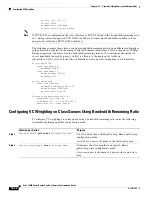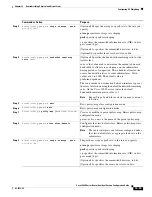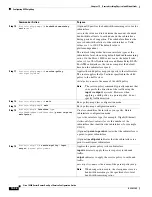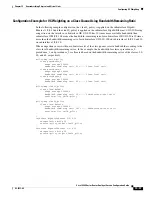
15-22
Cisco 10000 Series Router Quality of Service Configuration Guide
OL-7433-09
Chapter 15 Oversubscribing Physical and Virtual Links
How the Router Determines VC Weights
Determining VC Weighting—Cisco IOS Release 12.3(7)XI1 and Later Releases
In Cisco IOS Release 12.3(7)XI1 and later releases, a weight parameter is used to control the number of
cells for each VC that is sent into the virtual path (VP). You can configure this weight parameter directly
for each VC using the
weight
command. This weight value determines which VCs get priority in the VP
schedules during a congested state.
The versatile time management scheduler (VTMS) shapes the VC rate and the SAR mechanism shapes
the VP rate. Even though the VTMS shapes the VC, the SAR mechanism controls the access of the VCs
to the VP. The SAR mechanism uses a round-robin between the VCs to send a given number of cells per
VC into the VP. The SAR mechanism uses the weight parameter you configure to control the number of
cells for each VC.
To be fully effective, you must set the SAR line card queue depth for each VC interface queue above the
weight for VC weighting by using the
queue-depth
command. This command enables you to set the high
watermark and low watermark, which define the depth of the VC interface queue. The optimum
threshold values for these watermarks are a function of a number of variables, such as the following:
•
Number of queues on a VC
•
Priority queue latency requirements
•
Bandwidth of the VC
•
Accuracy of VC bandwidth utilization
•
Per-queue bandwidth accuracy
Because so many variables influence watermark threshold values, you might need to experiment with
different values to determine the optimum high and low watermark values for your configuration. In
general, the following guidelines apply:
•
Set the low watermark equal to the VC weight. If the low watermark is less than the VC weight, a
full weight worth of cells might not be enqueued in the SAR mechanism when the scheduler
round-robin gets to the VC. As a result, the VC might not get its fair share.
•
Set the high watermark equal to the low watermark plus 2.
For more information about the high and low watermarks, see the
“High Watermark and Low Watermark
Default Values” section on page 15-25
.
Determining VC Weighting—Cisco IOS Release 12.2(31)SB2 and Later Releases
On the PRE3, the weight parameter is not only used to control the number of cells for each VC that is
sent into the virtual path (VP), but is also used by the packet scheduler to determine the bandwidth
allocation of the VC during congestion. When congestion occurs in a VP, the bandwidth of the VP is
distributed among the VCs within the VP tunnel in proportion to the weight configured on the VC. When
congestion occurs on an ATM port, the bandwidth of the port is distributed among the VCs in proportion
to the weight configured on the VC.

